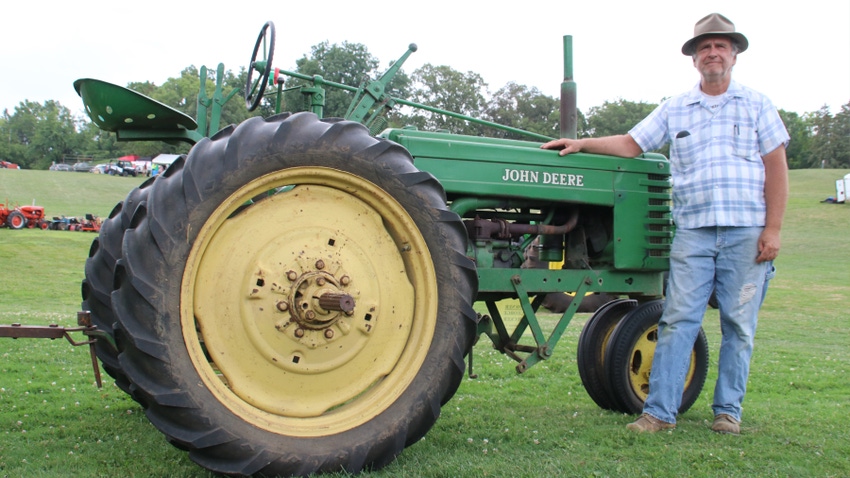November 8, 2023

Taking ownership of a John Deere Model H tractor was like a dream for one family that resided in Menomonie Falls, Wis. The scenario began when Ervin and Hyacinth Becker were the second owners of the 1939 model after it came into their possession through a marriage and divorce court decision.
Their son George Becker explains: “After seeing an advertisement in the newspaper, my folks pulled the tractor, which cost them $495, from South Milwaukee with a Model A Ford. The couple teamed the machine, serial number 6795, with horses that did cultivating and planting along with a 1928 Case Model C used strictly for planting. At that time, Mother worked in a tanning factory to earn enough money to buy the tractor. Her chores on their 80-acre dairy farm were making hay and cultivating while Dad did the planting.”
The H came from Lindsey Brothers, the John Deere dealership in Milwaukee, located near Walker’s Point.
“An early experimental cultivator was also part of the deal. Besides handling tillage chores, hay was cut with an old horse No. 5 McCormick 4-foot mower,” Becker adds. “Mother worked hard on the farm, often drove the tractor in parades, and was vehement that it should always remain on the property. Over time, Dad rebuilt the engine and carburetor while Mother meticulously hand-painted everything with a small brush.”
The H, part of the two-cylinder series, was manufactured in Waterloo, Iowa, from 1939 to 1947, with 58,584 units coming off the assembly line. It cost $650 in the final year of production. Features included: a four-by-two-wheel-drive chassis, hand crank starter, dry disk clutch, open hydraulics, and two-wheel-drive mechanical steering. It was rated at 12 hp on the drawbar and 14 hp on the belt, weighed 2,080 pounds, had a 7.5-gallon-capacity fuel tank, and featured a John Deere 1.6-liter, 2-cylinder, liquid-cooled kerosene engine.
It was introduced as a much-scaled-down version of the John Deere Model G and was to serve as a general-purpose row crop tractor intended for smaller farms. As with most row crop tractors, the width between the rear wheels could be adjusted to match a different row spacing. The front wheels were offered with wide and narrow steel adjustments, as well as high-crop and single front wheel versions. A cost-saving peculiarity of the H was the engine output passed through the camshaft rather than the crankshaft.
During his teenage years, Becker made spending money plowing gardens for neighbors. His dad used the H to skid logs out of the woods every winter. Today, the retired businessman still plows with a one-bottom, 14-inch unit. A couple of years ago, he hooked up the tractor to a Sears & Roebuck buck saw and cut firewood. Each year it goes to the Sussex Antique Power Association Day.
“I drove the H when I was 8 years old, moving soil around the yard with a two-handle slip. My feet barely reached the platform, and it was nearly impossible to stay in the seat. Many times, I wanted to quit but stuck with that chore,” Becker says. “The H came to me when Mother passed in 2003. She was the guardian angel of that machine and made sure it never sat outside in the rain. I call it the ‘heritage tractor’ because of all the memories growing up doing various jobs. I still like to go on a joyride up and down the road. It is so simple to operate with that hand clutch — just a perfect tractor.”
Persinger writes from Milwaukee. To have your favorite tractor featured, email or send in a photo of yourself with your tractor, along with a 300-word write-up about the tractor, to: [email protected] or Wisconsin Agriculturist, P.O. Box 236, Brandon, WI 53919.
Read more about:
TractorsAbout the Author(s)
You May Also Like




